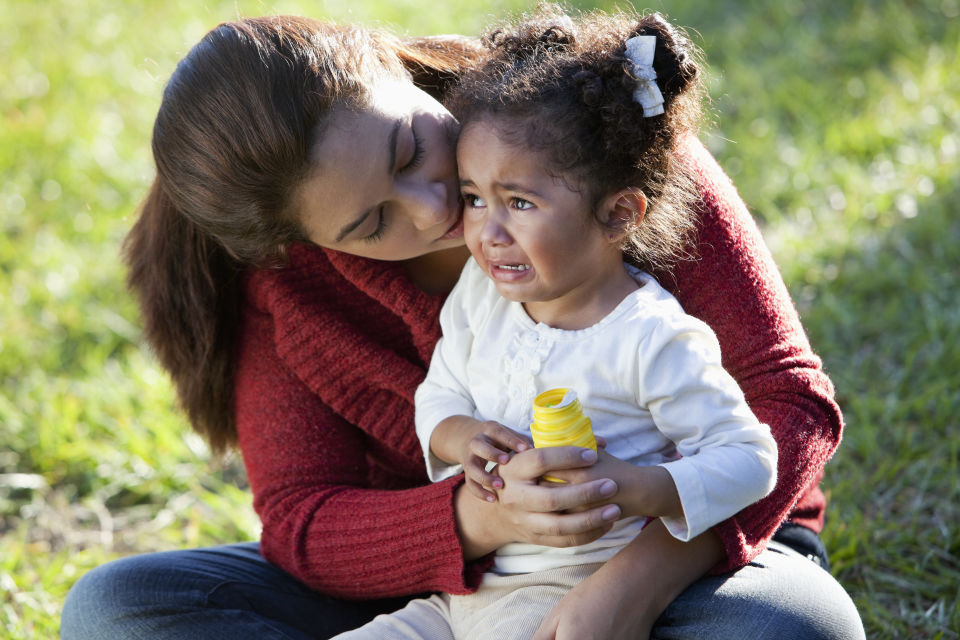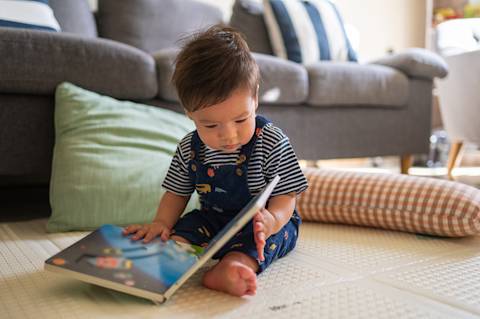Toddlers have a lot of big emotions, but they often don’t know how to express them. Sometimes they turn to aggressive behaviors like biting or hitting when they’re not able to talk about their feelings or needs. As caregivers, we can teach them safer ways to communicate about and handle emotional moments.

Biting and hitting typically start around age 2 to 3. Toddlers are still learning all about the world around them, and they don’t yet have the self-control, maturity, or language skills to effectively communicate what they need. When they feel frustrated or angry, they might lash out by biting, hitting, or throwing a temper tantrum.
As caregivers, we can help our toddlers get through these emotional moments and teach them safer, healthier ways to express their big feelings. There are some strategies you can try to help prevent your toddler from getting to the point of biting and hitting. Every child is different, so you might find that some strategies work better for your child than others. That’s OK! It’s all about finding what works for your family.
Learn the signs that your toddler is growing frustrated or angry. Maybe they get teary-eyed, start throwing toys around, make grunts of frustration, or begin whining. When you notice these signs, it might be time to step in.
You can try asking them about how they’re feeling by saying, “It looks like you’re feeling angry or frustrated right now. Can you talk to me about what you are feeling?” Helping them identify the emotion they’re feeling and encouraging them to use their words can help them remember to talk to you about what’s frustrating them.
Some children respond well to redirection. If they’re growing frustrated, you can try to get them involved in a different activity, move them to another room, or go outside for some fresh air. Sometimes just removing them from the frustrating situation can help calm them down and get them excited about something else.
Sometimes preventative measures don’t work. If your toddler begins to display aggressive behaviors, there are steps you can take to keep them safe:
If your child is at risk of hurting themself or someone else, gently but firmly hold them in place with their arms to their sides. This can be hard, especially with a frustrated, squirming toddler, so do your best to hold them in a firm hug. As you do this, talk to them and explain what’s going on. Here's an example of what you can say, “I understand that you’re feeling angry, and it’s OK to feel angry. But hitting and biting is not safe for you or your friends. I’m going to hug you until you stop hitting and biting because I want you to be safe.”
Then, as soon as you can, remove your child from the situation. Take them to a calm place where there aren’t many people around. If you’re out of the house running errands, this could mean moving them to the car. If you’re at a friend’s house, you can take them outside or to another room. The key is to find a place where there are limited distractions. Taking some deep breaths together can help your child calm down. Read more.
Once they’ve calmed down, this is a good time to talk about other ways they can express their feelings of anger or frustration. You can give them some words to say by asking about emotions, for example: "What are you feeling? Are you sad? Angry?" Also, let them know that they can tell an adult if something is making them angry. Teaching them how to talk about their feelings takes time and a lot of repetition. But with consistent reminders, they’ll begin to remember the lesson.
Emotional moments are difficult for everyone. At the end of the tantrum, your child might need to be reminded that even when they do things like bite and hit, you still love them and support them.






